Don’t you love being inspired by ingredients that you wouldn’t expect to excite you?
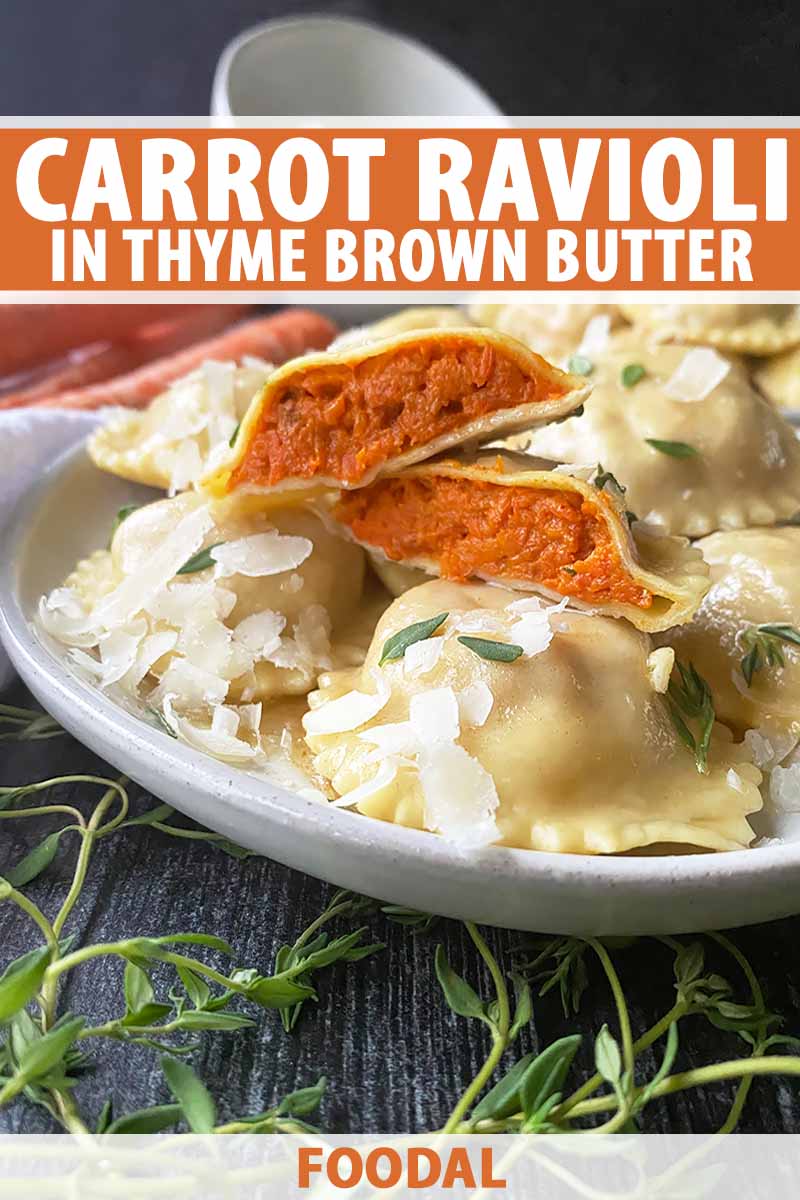
Take the humble carrot, for instance.
I often downgrade these for simple uses, dipped in hummus or chopped in a salad. But I was happily surprised by a meal where they served as a featured ingredient in the main course.
Tim and I took a totally last-minute and incredibly refreshing road trip once to Louisville, and one night, we had a delicious vegetarian meal at a restaurant that also owned and operated a small farm on the premises.
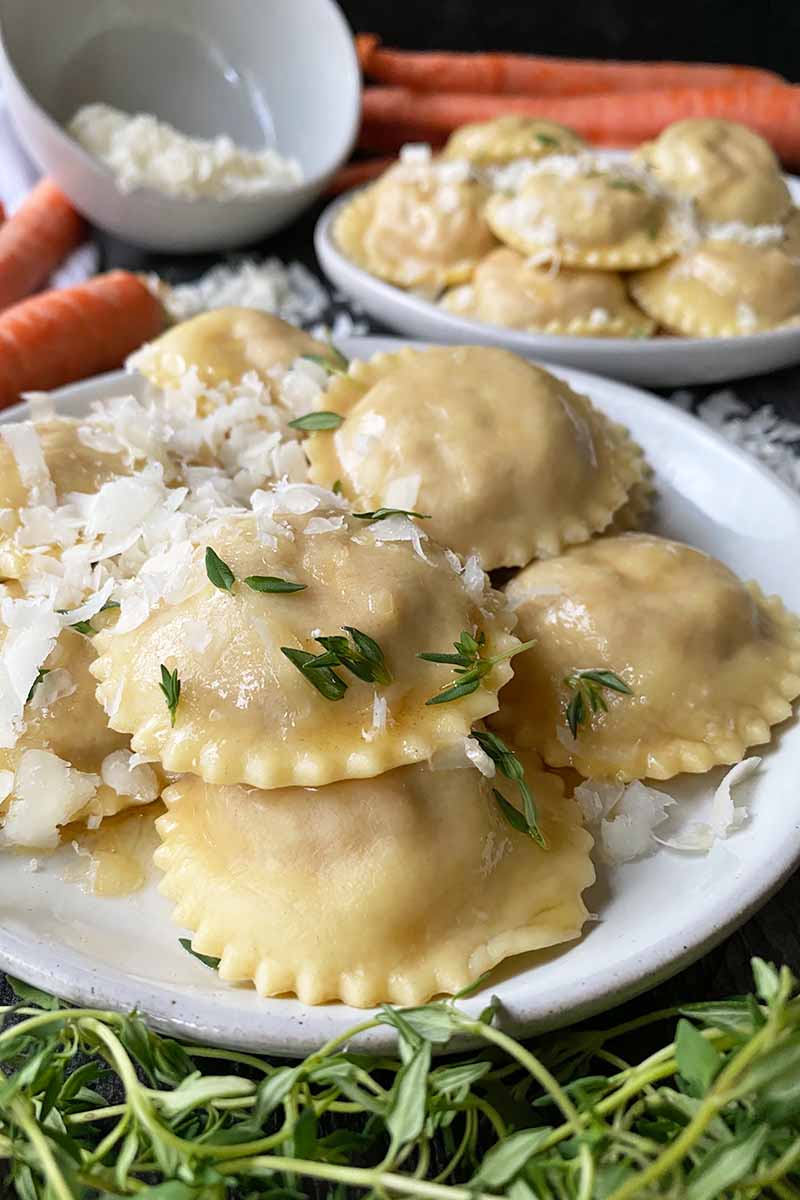
Around the fresh pasta I had for dinner was this wonderful roasted carrot puree, made using the farm’s carrots.
I could have sworn it was squash! It was so sweet, creamy, and vibrant.
That first bite immediately set my mind racing with other uses for carrot puree:
Pie? Custard? Ravioli?
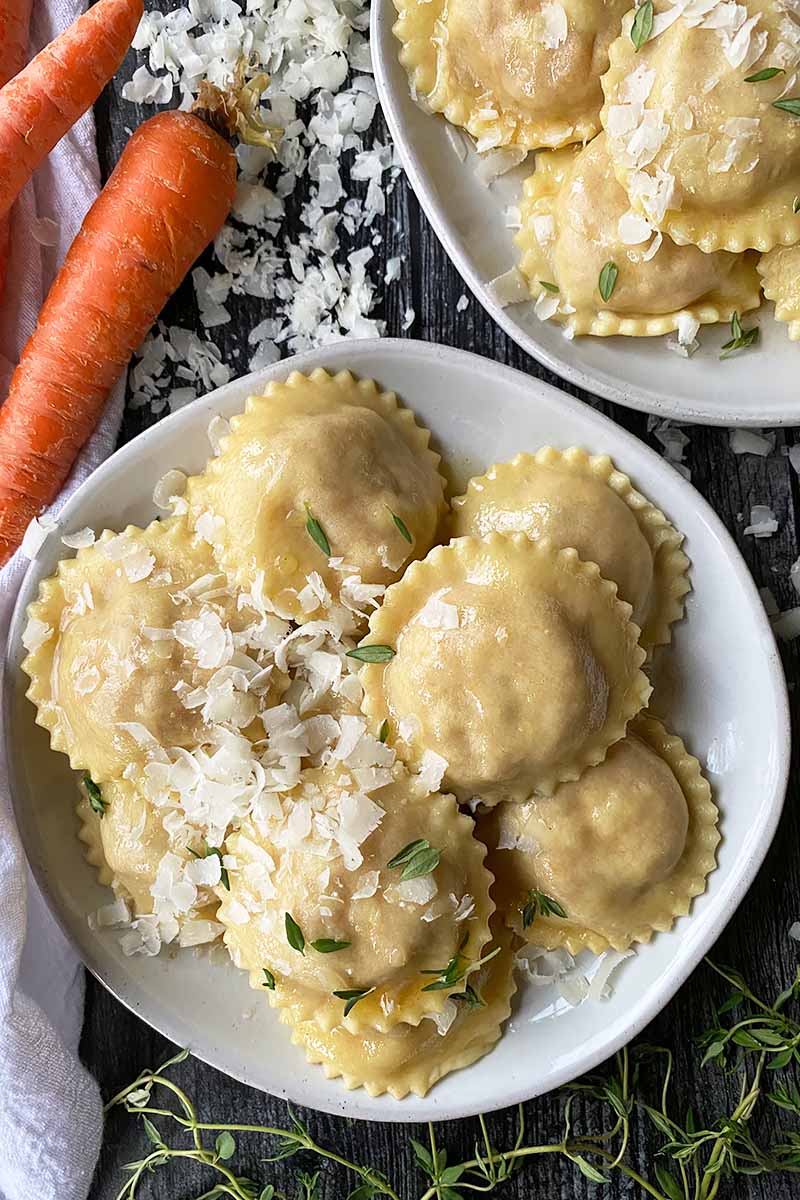
By the time the meal was over, I had my heart set on making fresh ravioli from scratch.
On our way back home from our trip, we went to the grocery store so I could grab a big bag of carrots. And with my suitcase left unpacked by the front door, I rushed to the kitchen and pulled out the pasta maker.
This recipe for roasted carrot ravioli is the creation from that night, made with me pulling sheets of pasta dough in the kitchen while Tim unpacked for both of us.
The filling showcases a roasted carrot puree with shallots, roasted together on the same baking sheet until they’re deeply caramelized.
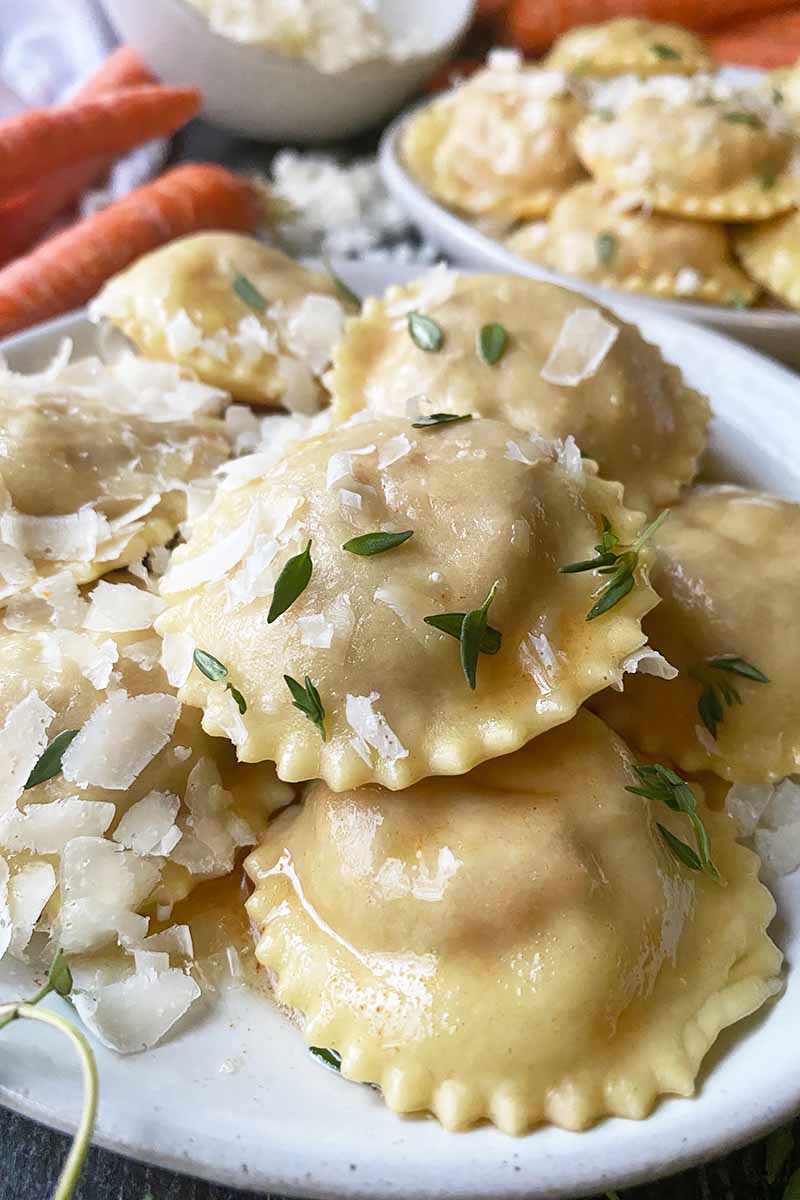
Similar to a squash or sweet potato puree, the filling is sweet, blessed by the natural sugars in the roasted carrots.
It has a distinct earthiness from the root vegetables, a velvety texture from the heavy cream, and a light saltiness and acidity from grated Parmigiano Reggiano.
I serve the ravioli with a quick and easy brown butter sauce infused with thyme, and garnish them with more thyme, grated cheese, and toasted pumpkin seeds.
Who among us has always eaten carrots, but never thought to use them in a new and creative way like this, besides the usual crudite finger food or a quick veggie side?
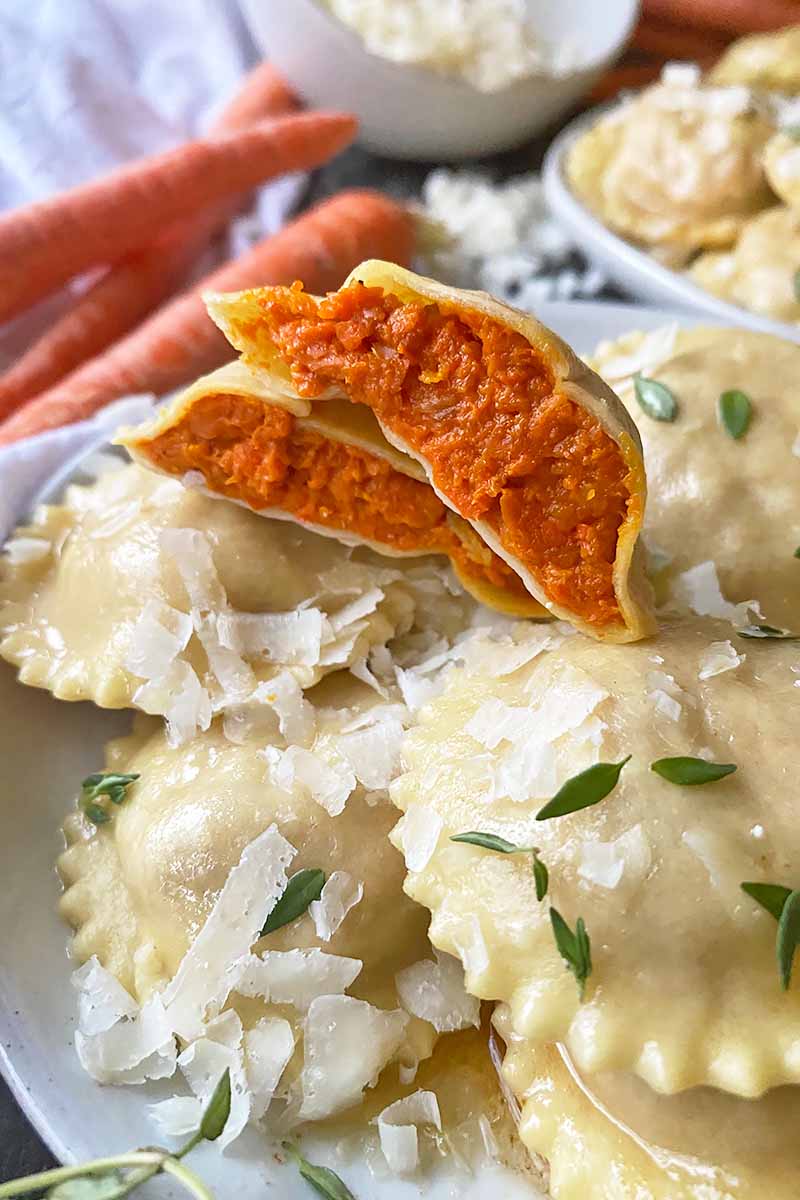
Sometime soon, I hope you’ll look at them in a new light as you prepare your dinner. When roasted, pureed, and used to fill fresh pasta, they are entirely worthy of being the stars of the main course!
Print
Roasted Carrot Ravioli in Thyme Brown Butter
- Total Time: 2 hours
- Yield: 40-45 ravioli (about 4 servings) 1x
Description
Roasted carrot puree is earthy and sweet, a perfect filling for fresh ravioli with thyme brown butter sauce.
Ingredients
For the Pasta:
- About 1 pound fresh pasta dough, room temperature
- All-purpose flour or semolina flour, for dusting
For the Roasted Carrot Puree:
- 2 pounds carrots, peeled and halved vertically
- 2 medium shallots (about 4 ounces), peeled and halved vertically
- 4 tablespoons olive oil, divided
- 1 teaspoon salt
- 1/2 teaspoon ground black pepper
- 1/2 cup heavy cream
- 1/4 cup grated Parmigiano Reggiano cheese
For the Thyme Brown Butter Sauce:
- 1 stick unsalted butter, cubed
- 8 sprigs fresh thyme
- 1/2 teaspoon salt
For the Garnish (optional):
- Fresh thyme
- Grated Parmigiano Reggiano
- Toasted and salted shelled pumpkin seeds
Instructions
- Preheat the oven to 450°F. Toss the carrots and shallots with 2 tablespoons olive oil, salt, and pepper on a baking sheet lined with aluminum foil or a silicone mat.
- Roast for 30-35 minutes, until tender and caramelized. Remove from the oven and let cool slightly in the pan.
- Transfer the carrots and shallot to a food processor. Add the heavy cream and remaining olive oil. Blend until smooth. Add the grated cheese and blend again until completely incorporated, scraping down the sides as needed. Transfer the mixture to a bowl and set it aside while preparing the pasta.
- Lightly flour a clean work surface. Divide the pasta dough into four equal pieces. Work with one piece at a time, while keeping the rest covered with plastic wrap. Roll out the dough into a thin rectangle using a rolling pin or pasta maker. The pasta should be very thin, about 1/8 inch thick.
- Cut the rectangle in half vertically. If using a ravioli mold, carefully place one half on top of the mold. Gently press your knuckle or spoon into each depression of the mold to create small wells for the filling. Place about 2 teaspoons of the filling into each well. If using a ravioli stamp 2 inches in diameter, place the rectangle half on a lightly floured surface. Place about 2 teaspoons of the filling on top of the pasta in neat mounds about 1/2 inch apart from each other to leave enough space in between each mound to accommodate the edges of each ravioli. Depending on the thickness of the dough, you should be able to place 2 rows of 5 to 7 mounds on the rectangle half.
- Place the other half of the rectangle directly on top of the other half with the filling. If using a ravioli mold, use a rolling pin to firmly roll over the top of the mold, cutting and sealing the ravioli. Flip the mold upside down to release them onto a lightly floured surface. If using a pasta stamp, lightly flour the stamp and firmly press over each mound, cutting and sealing each individual raviolo.
- Place the cut ravioli on a lightly floured baking sheet. Repeat with the remaining dough until you use all of the filling.
- Bring a large pot of water to a boil. While waiting for the water to boil, prepare the brown butter sauce. In a medium-sized pot over medium-low heat, melt the butter. Add the thyme. Stirring the butter with a whisk, continue to cook until it starts foaming. Keep stirring until the butter turns a deep golden color, develops dark flecks, and releases a nutty aroma, for about 5 minutes. Immediately remove from the heat and pour through a fine mesh strainer into a large bowl. Whisk in the salt, and set aside while you cook the pasta.
- Generously salt the water when it reaches a rolling boil. Carefully drop half of the ravioli in the boiling water and cook for 3-4 minutes, or until al dente. Using a slotted spoon, carefully remove the ravioli and place on a serving platter. Cover loosely with aluminum foil. Repeat the boiling process with the remaining ravioli.
- Pour the brown butter sauce over the ravioli on the platter. Garnish with grated cheese, thyme, and toasted pumpkin seeds. Serve immediately.
- Prep Time: 1 hour, 20 minutes
- Cook Time: 40 minutes
- Category: Vegetables
- Method: Baking and Boiling
- Cuisine: Pasta
Keywords: ravioli, carrot, shallot, brown butter, thyme
Cooking by the Numbers…
Step 1 – Prep
Preheat the oven to 450°F.
If using fresh pasta, prepare according to the directions for your selected recipe. Try our semolina pasta dough or spelt pasta dough. And be sure to review our pasta-making tips and tricks before getting started!
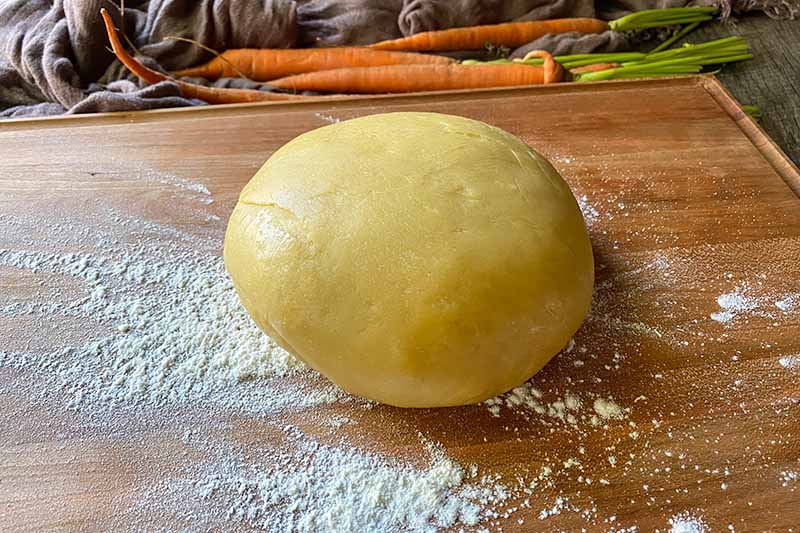
If the dough was resting in the refrigerator, let it come to room temperature before rolling.
Peel and slice the carrots and the shallot vertically. Slicing vertically allows more surface area for roasting, taking advantage of as much delicious caramelization as possible to get the deepest flavor!
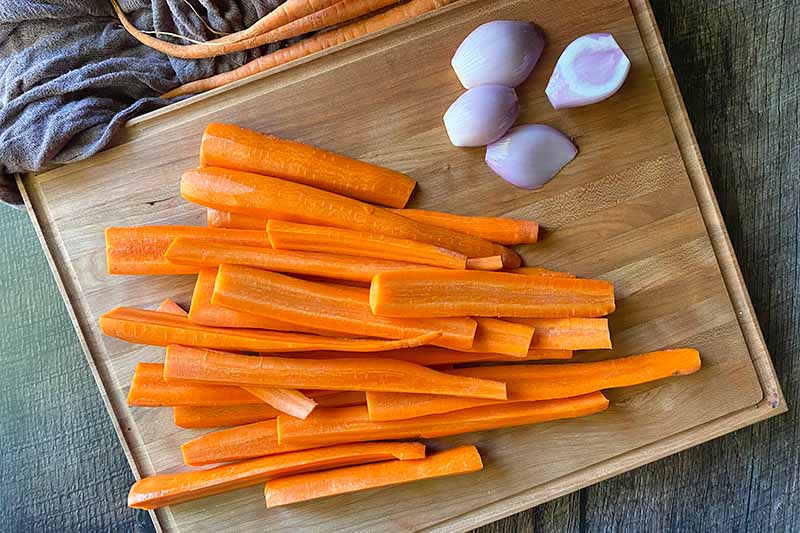
Measure and divide the olive oil. Measure the heavy cream, salt, and pepper. Remove the thyme leaves from the stems.
Grate the cheese and cube the butter. Toast and lightly salt the pumpkin seeds if using, if they have not already been prepared. These should be shelled pepitas.
Step 2 – Roast the Carrots and Shallot
Toss the carrots, shallot, 2 tablespoons olive oil, salt, and pepper on a rimmed baking sheet lined with aluminum foil or a silicone mat.
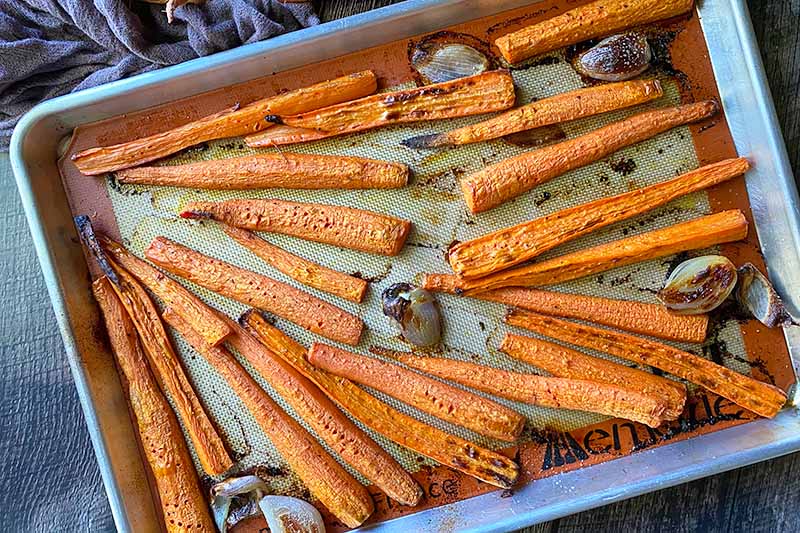
Roast for 30 to 35 minutes, until tender and caramelized, tossing once about halfway through cooking. You should be able to pierce a carrot with a fork with no resistance when it’s done.
Remove from the oven and let cool slightly in the pan.
Step 3 – Puree
Transfer the carrots and shallot to a food processor with the heavy cream and remaining two tablespoons of olive oil. Blend until smooth. Add the grated cheese and blend again until completely incorporated.
You may need to scrape down the sides of the food processor one or two times while you work, to reincorporate the ingredients.
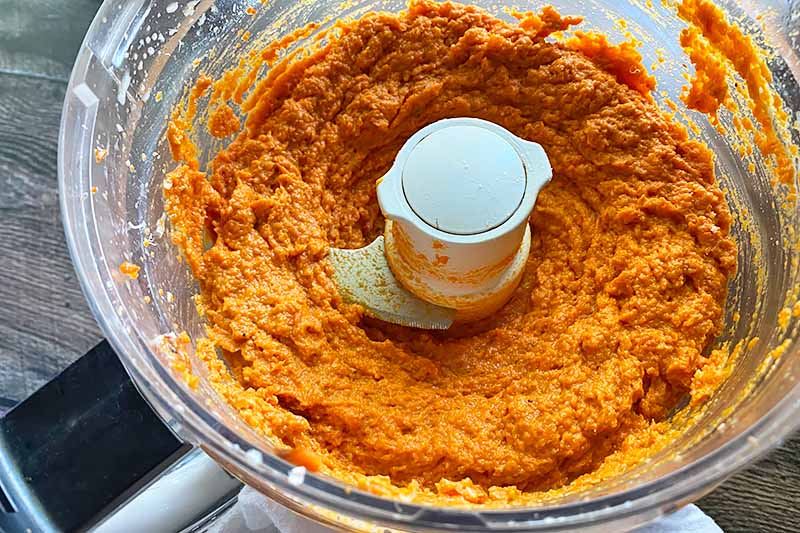
Transfer the mixture to a bowl, and set it aside at room temperature while you prepare the pasta.
Step 4 – Roll the Pasta
Lightly flour a clean work surface. Divide the pasta dough into four equal pieces. Work with one piece at a time, while keeping the remainder covered with plastic wrap so it doesn’t dry out.
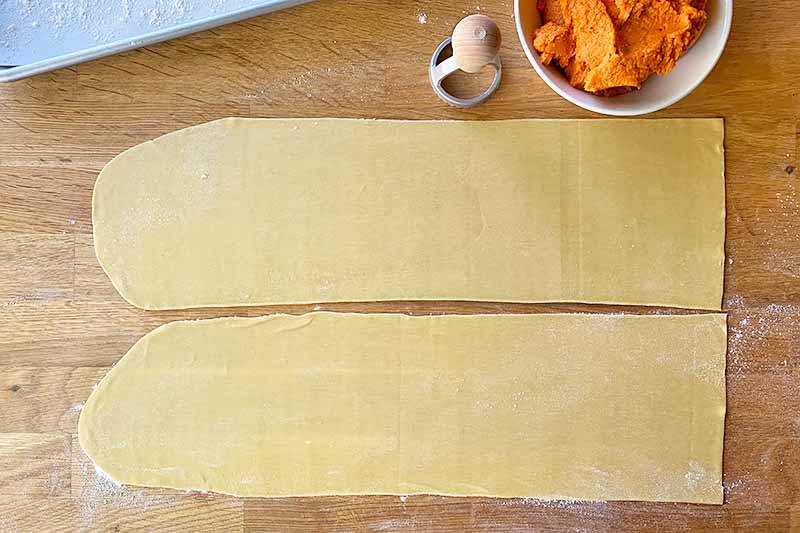
Roll out the dough into a thin, rectangular shape using a rolling pin or pasta maker. The pasta should be very thin, about 1/8 inch thick.
If you are using a ravioli mold, the pasta should be a similar width as the mold and double the length, since you will need to cut the rolled dough in half vertically. One half will be for the bottom of the ravioli, and the other half is for the top to cover the filling.
Step 5 – Fill
At this point, there are two basic ways you can go about filling and cutting:
If you’re using a ravioli mold, carefully place one rectangle half on top of the mold. Gently press your knuckle or a spoon into each depression of the mold to create small wells for the filling. Place about 2 teaspoons of the filling into each well.
Need to find the best mold? This 12-cup aluminum mold from Fox Run that’s available on Amazon is a great choice, and it includes a plastic tray for easily and gently creating indentations.
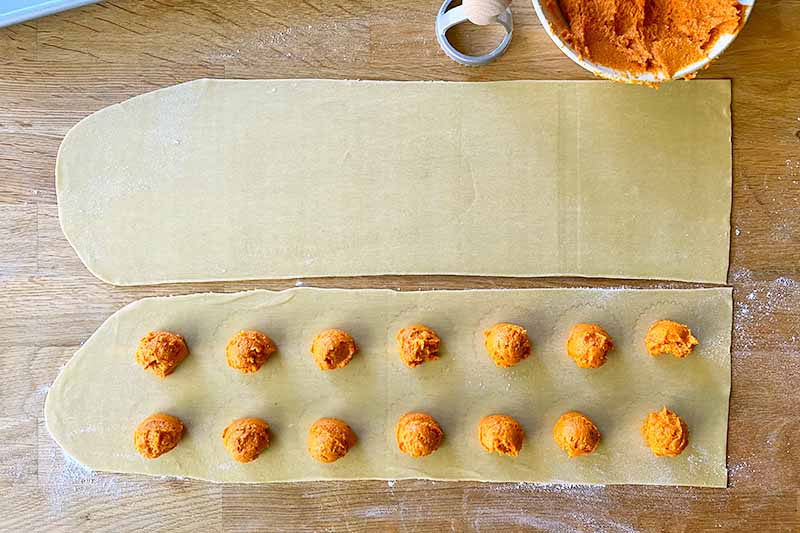
If you are using a ravioli stamp, preferably one that’s 2 inches in diameter, place the rectangle half on a lightly floured surface. Place about 2 teaspoons of the filling on top of the pasta in clean mounds spaced about 1/2 inch apart from each other, leaving enough space in between each mound to accommodate the edges of each raviolo.
Depending on the thickness and pliability of the dough, you should be able to fit two rows of 5 to 7 mounds of filling on one rectangle half.
We recommend purchasing a stamp set so that you will have a variety of options and sizes to choose from. Consider the Chrider Ravioli 5-Piece Stamp Set, available on Amazon. You can make circles one night, squares on another, and hearts on special occasions!
A small cookie scoop is the perfect tool to get the most accurate and cleanest mounds!
Step 6 – Cut
If you are using a ravioli mold, place the other half of the rectangle directly on top of the filled wells.
Using a rolling pin, firmly roll over the top of the mold, cutting and sealing the ravioli. Flip the mold upside down onto a lightly floured surface to release them.
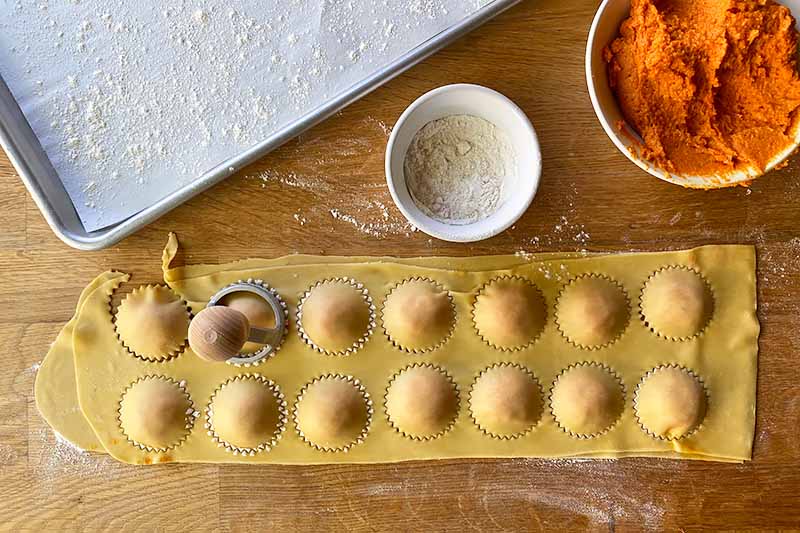
If using a pasta stamp, place the other half of the thin dough rectangle directly on top of the mounds.
Lightly flour the stamp and firmly press over each mound, cutting and sealing each individual ravioli. Discard any excess dough.
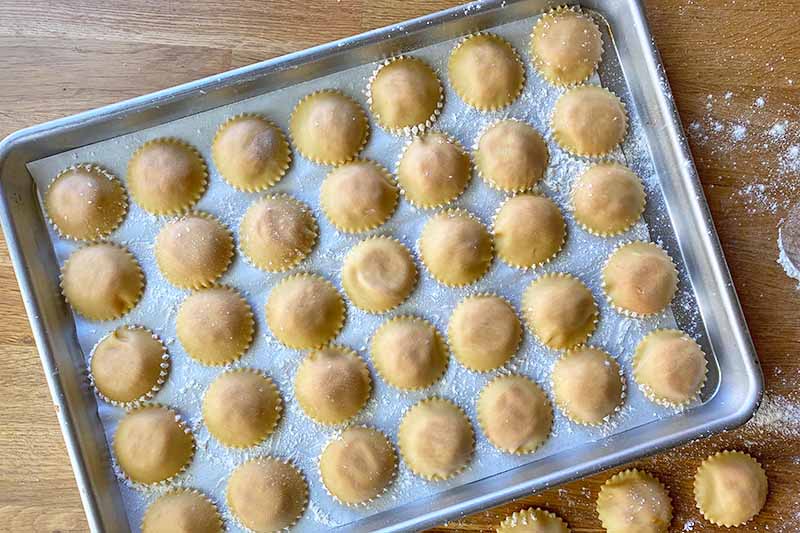
Place the cut ravioli on a lightly floured baking sheet without touching so they don’t stick. Set aside at room temperature while you make the sauce and boil the water.
Step 7 – Make the Sauce
Fill a large pot with water and bring it to a boil.
While the water is boiling, this is the perfect opportunity to make the brown butter sauce!
Since the pasta only takes a few minutes to cook, you will be rushed after cooking the pasta to make the sauce. By making the sauce first, you’ll have everything timed to perfection for the final plating to serve the pasta when it’s at its best.
In a medium-sized pot over medium-low heat, melt the cubed butter. Add the thyme. Stirring the butter with a whisk, continue to cook the butter until it starts foaming.
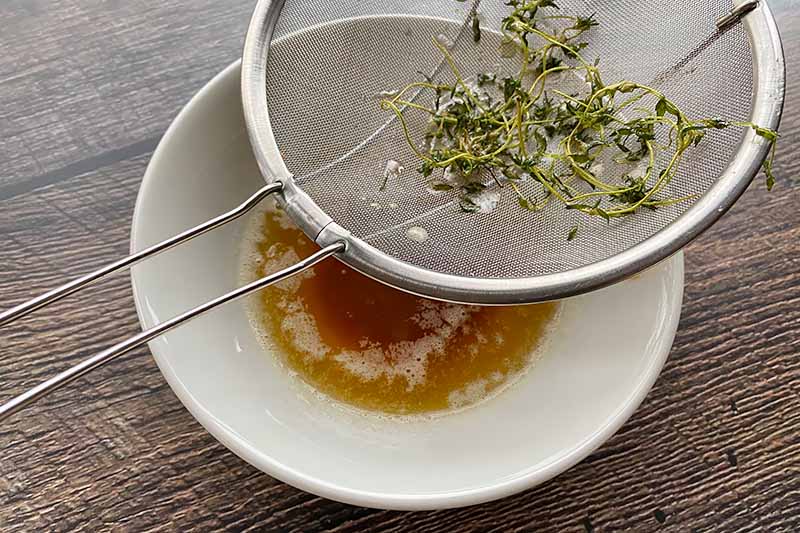
Keep stirring until the butter turns a deep golden color, develops dark flecks, and releases a nutty aroma. This will take about 5 minutes.
Immediately remove the pan from the heat, and pour the butter through a fine mesh strainer into a large bowl. Dispose of the thyme stems and anything else that’s left over in the strainer.
Whisk the salt into the brown butter sauce, and set it aside while you cook the pasta.
For a more thorough dive into the process of making brown butter (and not burning it!), read our tutorial here.
Step 8 – Boil the Pasta
When the water is at a rolling boil, generously salt it.
Carefully drop about half of the ravioli in the boiling water and cook for 3 to 4 minutes, or until al dente, stirring occasionally. They will start floating right away, but continue boiling to ensure the pasta is cooked through.
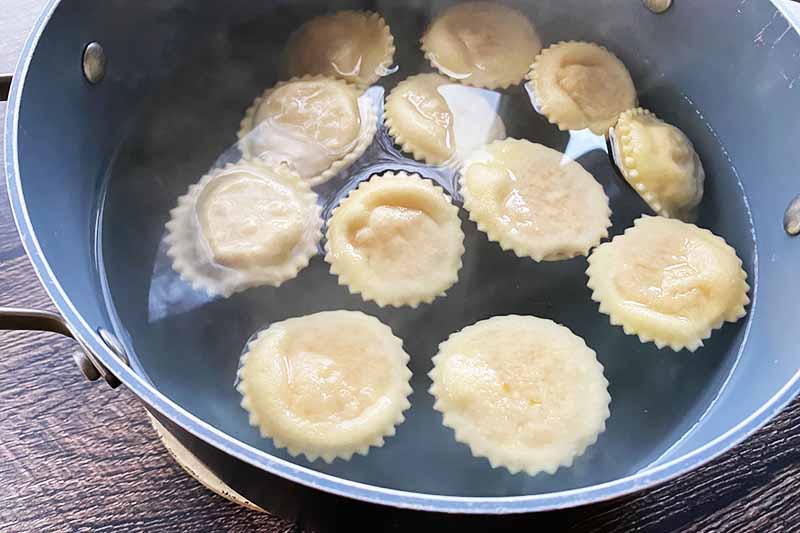
Using a slotted spoon, carefully remove the ravioli and place them on a large serving platter. Cover loosely with aluminum foil while you repeat the boiling process with the remaining ravioli, to keep them warm.
Step 9 – Serve
Pour the brown butter over the ravioli, and garnish with grated cheese, thyme, and toasted pumpkin seeds. They are best served immediately – enjoy!
What Other Sauces Would Work?
The deep flavors of the roasted carrots and shallots call for heartier flavor pairings – and I’m sure everyone will happily oblige!
I would save the fresh basil pesto for your light and summery pasta dishes, and the marinara for more classic meals like plain spaghetti or lasagna. But while those options are on hold, you still have a lovely variety of other sauces available that would pair beautifully with these homemade ravioli.
If you’re a little bummed that the pesto is off the table, here’s a delicious compromise – our luscious thyme pine nut butter still uses a base of pine nuts.
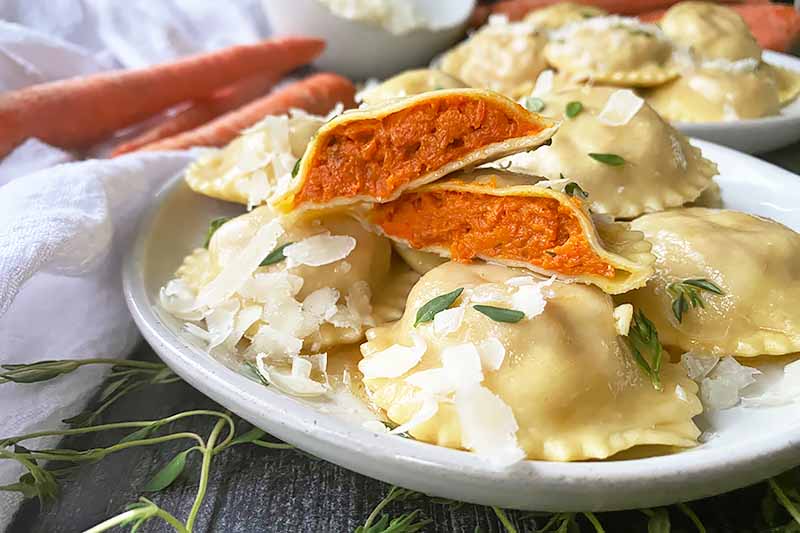
Want to seamlessly complement the creamy carrot filling? Everyone will be licking the plate clean when you serve your homemade pasta with a smooth and silky cream sauce like a bechamel or mornay.
If you choose to make our recipe for mornay sauce, use Parmigiano Reggiano for the cheese to echo the same cheese flavor that’s in the carrot filling.
We would love to know if you have any other ideas! Leave a comment below with your favorite sauce to serve with this dish.
Fill ‘er up! If you enjoyed this recipe for ravioli, we have a lineup of other pasta recipes with savory fillings. Try some of our favorites next:
Photos by Nikki Cervone, © Ask the Experts, LLC. ALL RIGHTS RESERVED. See our TOS for more details. Originally published on February 12, 2014. Last updated on November 25, 2021. With additional writing and editing by Nikki Cervone and Allison Sidhu.
Nutritional information derived from a database of known generic and branded foods and ingredients and was not compiled by a registered dietitian or submitted for lab testing. It should be viewed as an approximation.
About Shanna Mallon
Shanna Mallon is a freelance writer who holds an MA in writing from DePaul University. Her work has been featured in a variety of media outlets, including The Kitchn, Better Homes & Gardens, Taste of Home, Houzz.com, Foodista, Entrepreneur, and Ragan PR. In 2014, she co-authored The Einkorn Cookbook with her husband, Tim. Today, you can find her digging into food topics and celebrating the everyday grace of eating on her blog, Go Eat Your Bread with Joy. Shanna lives in Nashville, Tennessee, with Tim and their two small kids.

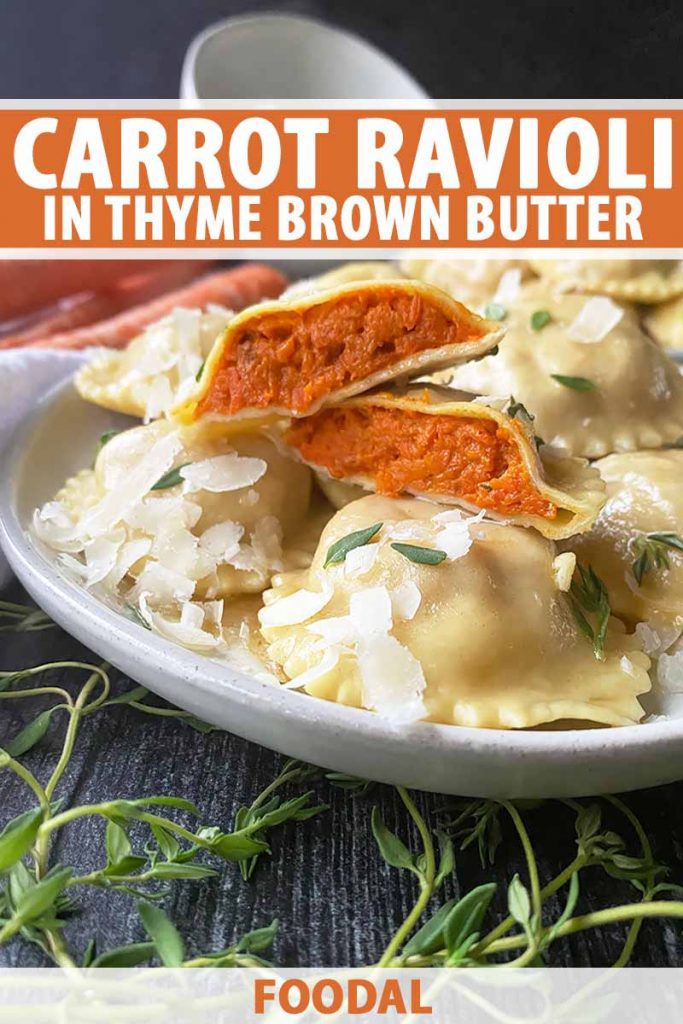
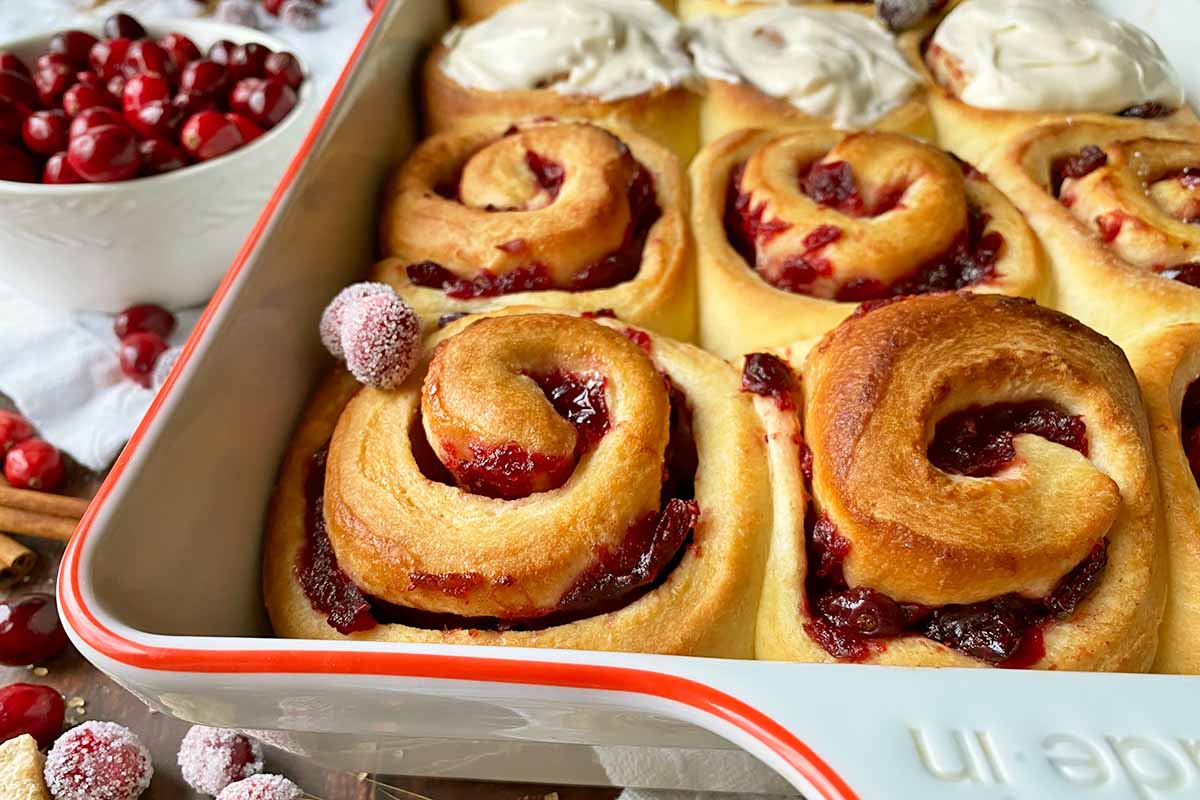
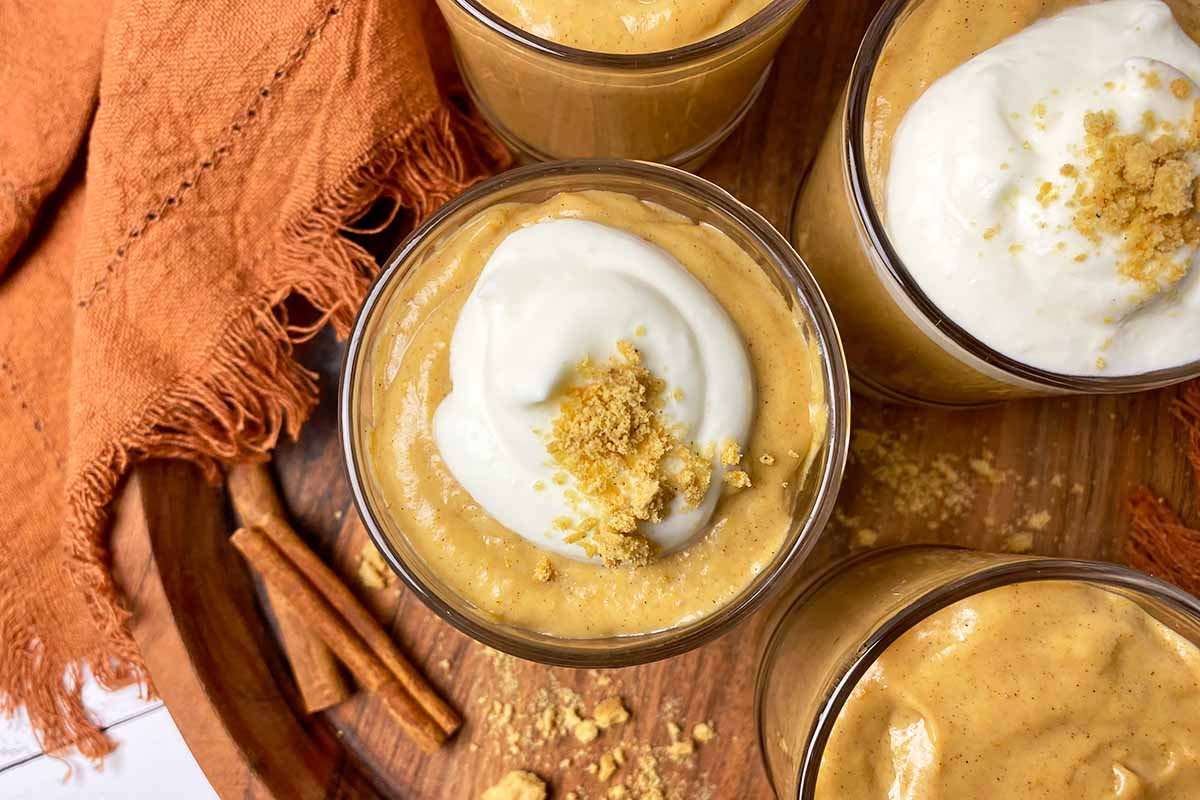
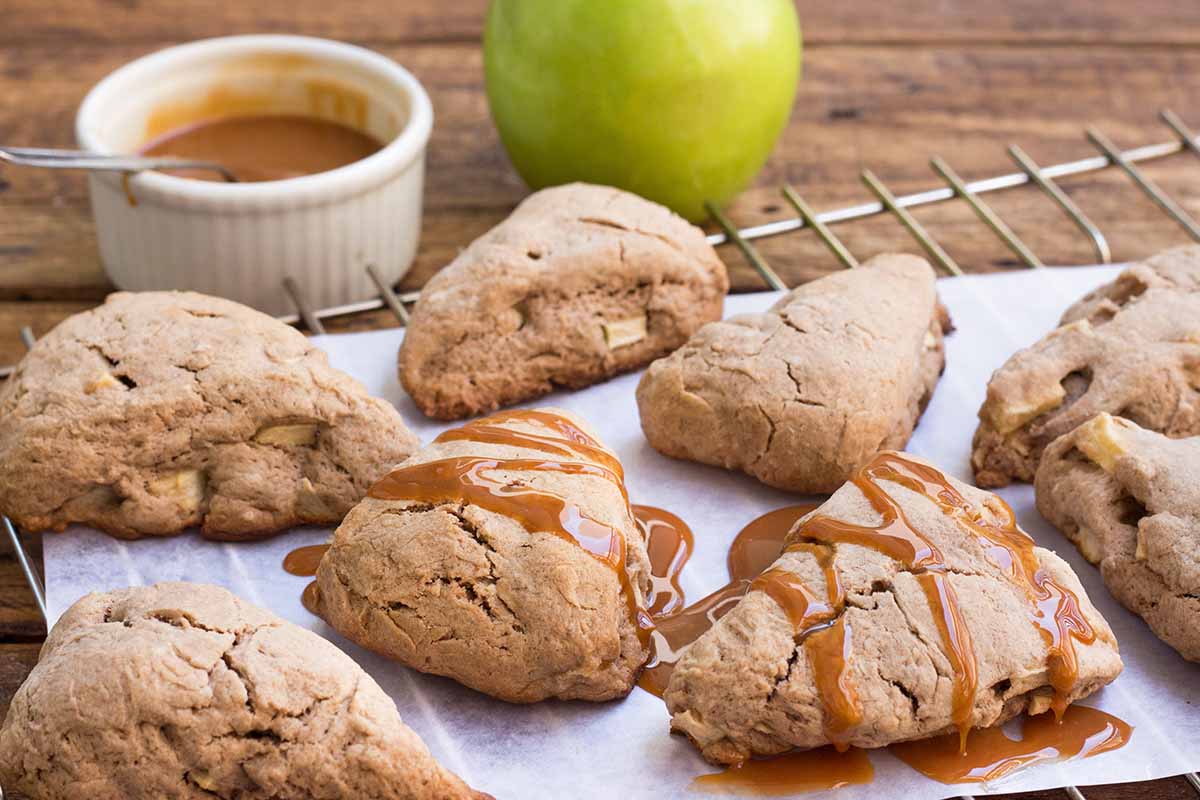
This looks so lovely!!
Thanks, Katrina!
A couple of years ago I made a pea and mint ravioli – this one is definitely next!
Stacy! That sounds right up my alley, too!
Love this, sweet friend.
Thanks, Christina! You’re the sweet one.
What a gorgeous dish!!!
Thanks, Marie!
This ravioli sounds utterly delicious, sweet and soft and full of flavour.
Thanks, Kathryn!
I just finished lunch, but these photos are making me hungry all over again! How could anyone look at these photos and not want to run right out to get the ingredients? Yum!
And they taste so much better than they look! Thanks, M! : )
Made these for Easter. My Dad (whose home we were dining at) was extremely skeptical about carrot ravioli as a concept much less cooked carrots. But, he was so happily surprised to try these. Truly delectable. Something about the shallot transforms the otherwise sweet carrots into a luscious savory treat you want to go back to again and again. We had 3 ravioli left out of 40 prepared and there were other sides, but this was a fave out of the whole meal. Nice to be able to make for my stepmom too who can’t do cow’s milk except butter. Forgot to mention substituted goat milk for cream and milk, still amazing. Great job.